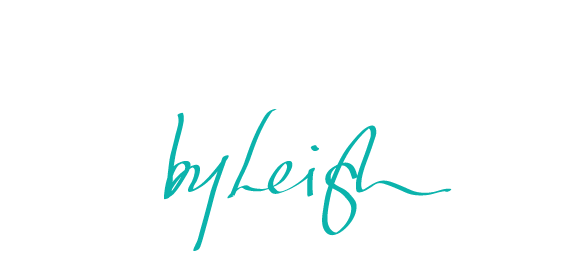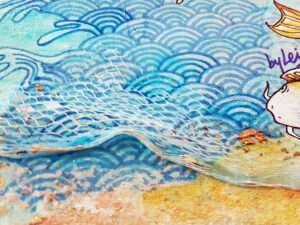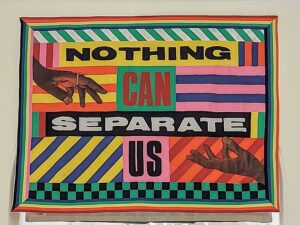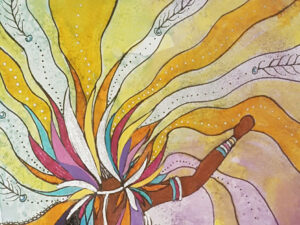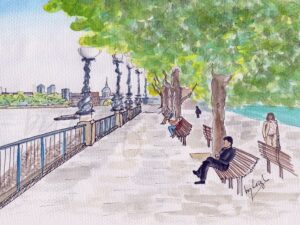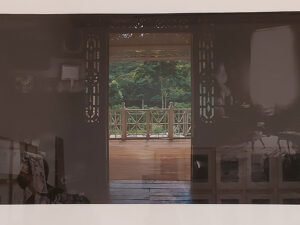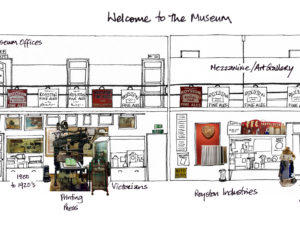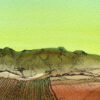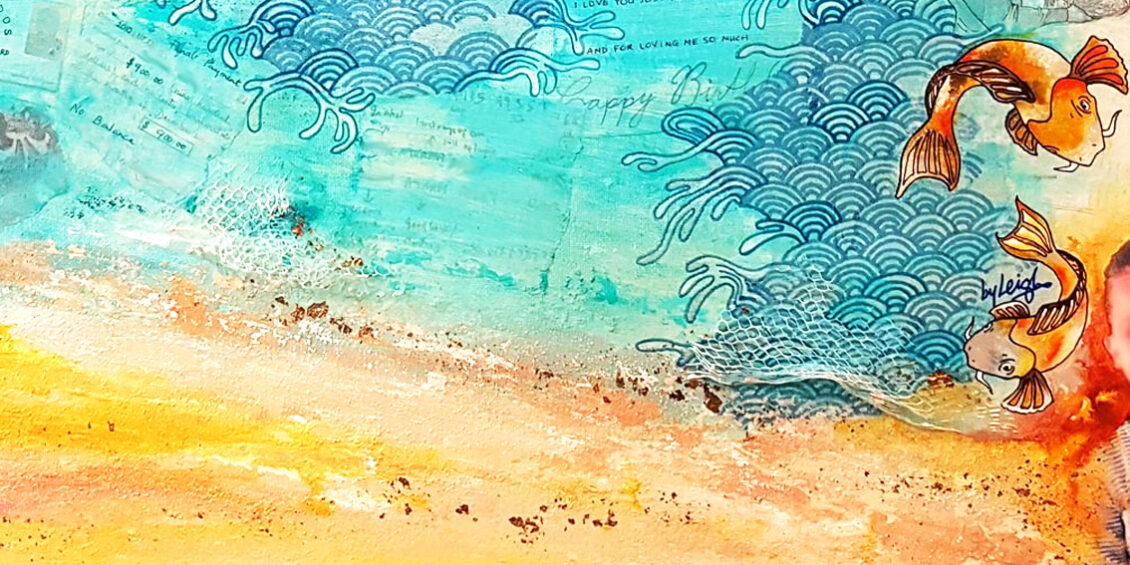
Featured Image: Diane’s 40th – Life Story Art by Leigh commissioned for a 40th birthday
01 Jan 2020
I sat down just now to do the final step of my findings – combine the merged interview map and the merged review map into one final map – but then I looked up at my post-it which was supposed to keep me on track and I scrutinised my question again –
How do I structure a large-scale exhibition that inspires visitors to social change action?
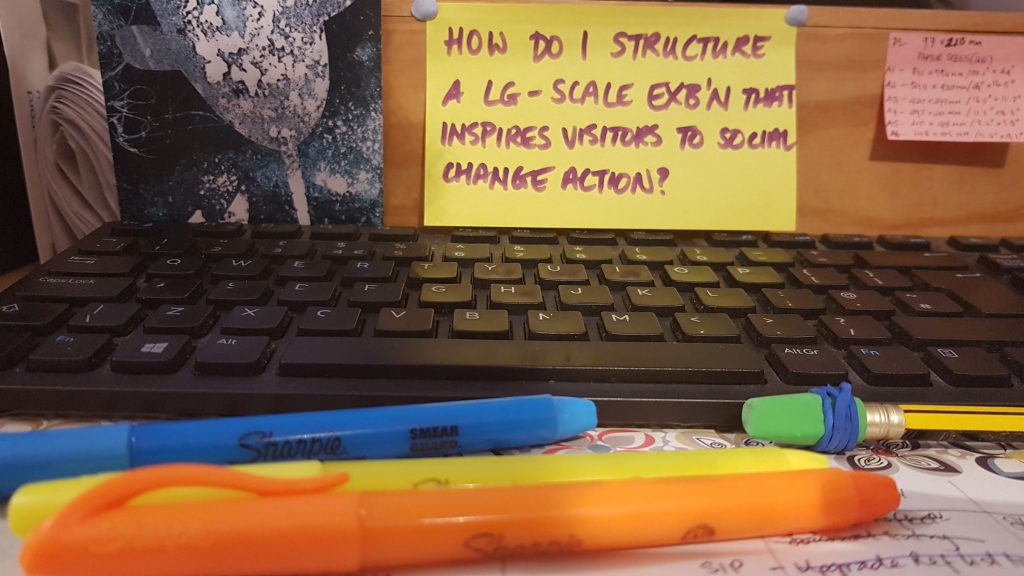
And I knew I was off track. I was stuck in process land. My question doesn’t say anything about processes. Sigh.
Now don’t get me wrong, the process behind each structure does help make me make the decision about which structure fits me best, but the process itself is not the answer to my question, at least not this research question.
So I began to ask myself, what exactly do you mean by ‘structure’ Stacey?
For me, structure refers to the way an exhibition is set-up, how it’s organised, how all the players and parts come together to achieve the exhibition objective. The structure, as I see it, determines how I will approach the production process, which stakeholders I need to involve, what resources take precedence over others, etc.
Searching for a definition of structure that fit my meaning, I found a few sites that helped.
Will Glendinning, a top UK live event Producer, Designer, and Director who has been lauded in Parliament for his work writes,
“Most industries that have to produce and deliver something have a clearly defined structure that exists because it’s proven and because it works. A restaurant kitchen has a structure led by a chef, an army led by its commander, a surgery led by the surgeon, and a film production led by the producer and director. Live events are absolutely no different. There is a structure that is proven and that works.” (Glendinning, 2019)
He goes on to talk about four questions that are the core of the structure, questions which essentially boil down to key roles that someone must have responsibility for otherwise the project will fail. His structure is based on these roles being considered and addressed. It is irrelevant to him whether the work is done by four people or one person, so long as it gets done.
I also found a Smithsonian paper about the making of exhibitions (Office of Policy and Analysis, 2002). It lays out the existing types of organisational structures and how those structures impact on where exhibition development sits and who controls it – a subject matter expert? Museum Directors? The Public Programmes department?
“The Exploratorium’s organizational structure, exhibition development process, and focus on exhibits that ‘work’ for visitors embodied the characteristics of what has become known as the ‘team approach’, in which professionals interact and share creative responsibility throughout the process. In fall 1979, Kellogg funding enabled the Exploratorium to conduct workshops for other museums, so that museum professionals could learn new ways to make exhibits.” (Office of Policy and Analysis, 2002, pp.12-13)
Although this institutional take on structure does not make sense for me to apply as an individual, I still found value here. I could dig further into this Team Approach and apply it on a smaller scale to fit my needs. The Smithsonian report also made me feel good about the types of questions I asked the curators I interviewed. The report and I both connect the structure with exhibition-making processes, and the roles needed to make it all happen. Discussing process and roles is how Janine Francois came to talk about her experiences of assembling and working in a collective of resourceful women (Francois, 2019, pp.8-9), and how Curator 1 came to tell me about open calls, her role as ‘chief cook and bottle washer’, and her own exhibition-making process (Curator 1, 2019, pp.4-5).
Looking at these two sources, I think it’s fair to say that the structure I am seeking to identify with this research will be determined by:
1) what are the key roles/tasks I need to make this exhibition, and
2) how should those roles relate to each other.
And with that in mind…
I do not need to develop one master map from all the sources I have tapped, what I need to develop is a series of maps that will define my structural options so that I can pick one.
On one hand, it feels like I should have had this realisation sooner – if only I’d defined structure sooner. On the other hand, isn’t this what research is about? Going down one road to see what’s there, then turning around to find a new road to explore if need be? Well I went down the data reduction road and got a wee bit carried away. Maybe my post-it note to keep me on target wasn’t as in-my-face as I hoped it would be. I refuse to regret the path I took, it’s done and I learned a lot on the way. Like creativity, research is an iterative process. The mistakes I make are all learning opportunities.
I have learned the importance of defining everything before starting any research project, even the things you think you already know the definition of.
I have learned that it’s so easy to go off on a tangent, and that I need to employ more than just one method for staying on track.
I have learned that I need to lay out the structures I have discovered from my research and decide how I will select one that best fits me.
—
References
Curator 1 (2019). Being an Artist and a Curator. [online] 11 Nov. Available at: Workflow [Accessed 19 Dec. 2019].
Francois, J. (2019). Social Change Curation. [online]. 4 Dec. Available at: Workflow [Accessed 19 Dec. 2019].
Glendinning, W. (2019). Event & Exhibition Team Structures. [online] Willglendinning.com. Available at: https://www.willglendinning.com/2019/08/event-exhibition-team-structures/ [Accessed 1 Jan. 2020].
Office of Policy and Analysis (2002). The Making of Exhibitions: Purpose, Structure, Roles and Process. [online] Smithsonian Institution, Washington DC: Smithsonian Institution, pp.5-7,12-14. Available at: https://www.si.edu/content/opanda/docs/rpts2002/02.10.makingexhibitions.final.pdf [Accessed 1 Jan. 2020].
